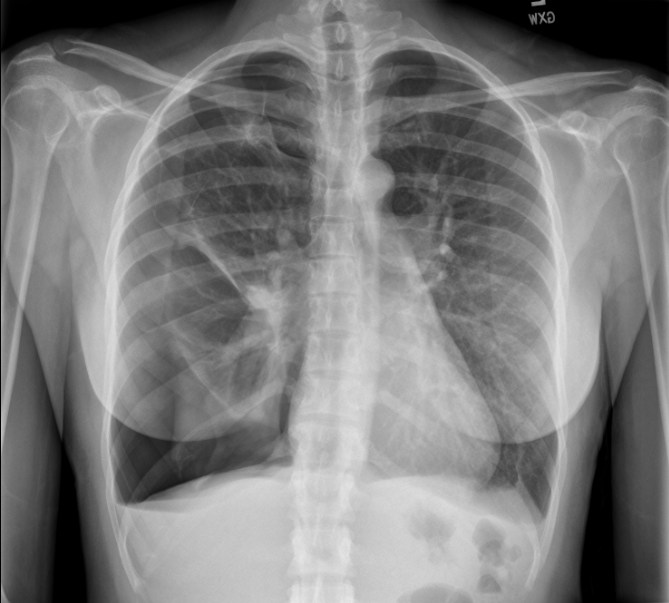Case Presentation: A 37-year-old woman with a history of endometriosis, fibroids status post fibroidectomy, and previous spontaneous pneumothorax presented with 3 days of progressively worsening right pleuritic chest pain and dyspnea on exertion. She had a similar presentation nine months prior at an outside hospital and was found to have a spontaneous right pneumothorax requiring chest tube placement, video-assisted thorascopic pleurodesis, and wedge resection. In the emergency department, chest x-ray revealed recurrent right-sided pneumothorax and she underwent chest tube placement. She denied multiple risk factors including recent trauma, air travel, diving, smoking, history of connective tissue disease, and chronic pulmonary disease. However, on further questioning, she reported both episodes of pneumothorax occurred on day one of her menses. Computed tomography of the chest showed right upper wedge resection postsurgical changes with otherwise normal lung parenchyma. The patient underwent subsequent video-assisted thorascopic pleurodesis with pleurectomy and pleural biopsy during her hospitalization. After discharge, pathology results revealed parietal pleura with endosalpingiosis and atrophic endometriosis. The patient continued her care with outpatient gynecology and was started on hormone suppressive therapy with Depo-Provera injections.
Discussion: Catamenial pneumothorax is defined as recurrent spontaneous pneumothorax that occurs during the perimenstrual period, typically affecting the right lung. It represents 3-6% of spontaneous pneumothoraces and should be suspected in women with pneumothorax occurring within 72 hours of menses onset. In women with concomitant endometriosis, catamenial pneumothorax should be especially considered since the vast majority of cases are often associated with endometrial implants of the pleura. Thoracic endometriosis is diagnosed by histopathological confirmation but all suspected areas of endometrial spread should be removed surgically to prevent recurrence. Additionally, adjunctive ovarian hormone suppressive therapy such as gonadotropin releasing hormone agonists, oral contraceptive pills, or progestins should be used for catamenial pneumothorax maintenance therapy. This case demonstrates a rare cause of spontaneous pneumothorax in a female patient that was missed during initial presentation. If the patient had been diagnosed after her first pneumothorax, she could have been treated earlier with hormonal therapy to prevent disease recurrence. In women of reproductive age presenting with pneumothorax, it is important to inquire about menses when assessing risk factors to evaluate for catamenial pneumothorax and initiate proper treatment.
Conclusions: Catamenial pneumothorax is a rare condition that affects women and is seldom considered when evaluating patients with spontaneous pneumothorax. Due to its repetitive nature, it is important to recognize catamenial pneumothorax on initial presentation in order to appropriately treat patients and prevent recurrence.

